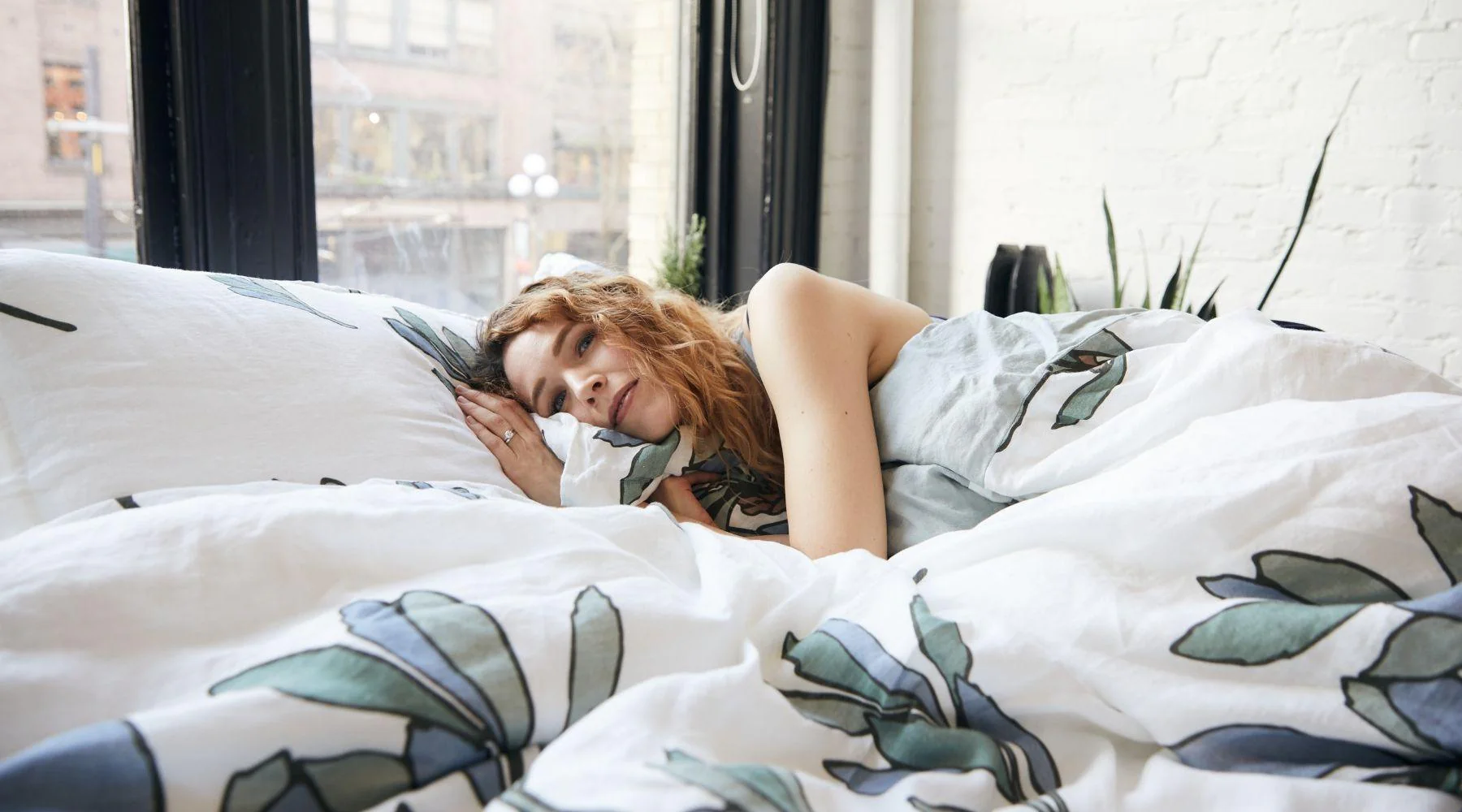Choosing the best organic linen bedding for your home can significantly enhance your sleep quality and bedroom aesthetics. With the growing popularity of sustainable and eco-friendly options, organic linen bedding has become a preferred choice for many. Here’s a comprehensive guide to help you select the perfect organic linen bedding for your home.
Understanding Organic Linen
Organic linen is made from flax plants that are grown without synthetic pesticides or fertilizers. This eco-friendly approach not only benefits the environment but also produces linen that is free from harmful chemicals, making it safer for your skin and health.
Benefits of Organic Linen Bedding
Organic linen bedding offers numerous benefits, including:
- Breathability: Linen is highly breathable, which helps regulate body temperature and keeps you cool in the summer and warm in the winter.
- Durability: Organic linen is incredibly durable and can last for many years with proper care.
- Hypoallergenic: It is naturally hypoallergenic and resistant to dust mites, making it an excellent choice for allergy sufferers.
- Sustainability: Linen is a sustainable fabric, as flax plants require less water and fewer resources to grow compared to cotton.
Choosing the Right Thread Count
Thread count refers to the number of threads per square inch of fabric. For linen bedding, a lower thread count (between 80 and 150) is often preferred because it enhances the fabric’s natural texture and breathability.
Why Thread Count Matters
While higher thread counts are often associated with softness and luxury in cotton bedding, linen’s quality isn’t determined by thread count alone. The weave and quality of the flax fibers are more critical factors.
Weave and Texture
The weave and texture of organic linen bedding play a significant role in its overall feel and appearance. The most common weaves for linen bedding are plain weave and herringbone.
Plain Weave
Plain weave linen is simple and durable, offering a smooth and consistent texture that softens with each wash. It is ideal for those who prefer a classic and timeless look.
Herringbone Weave
Herringbone weave linen has a distinctive V-shaped pattern that adds a touch of sophistication and texture. It is slightly thicker and provides a more luxurious feel.
Color and Style
Linen bedding comes in various colors and styles to suit different preferences and bedroom decors. When choosing colors, consider neutral tones like white, beige, and gray for a calming and versatile look. These colors can easily complement other elements in your bedroom.
Natural Dyes
Opt for linen bedding dyed with natural or low-impact dyes to ensure they are free from harmful chemicals. Natural dyes not only enhance the eco-friendliness of your bedding but also provide beautiful, subtle hues.
Sizing and Fit
Proper sizing and fit are crucial for comfort and aesthetics. Measure your mattress, including its depth, to ensure you select the right size for your linen bedding. Standard sizes include:
- Twin: 39 x 75 inches
- Full/Double: 54 x 75 inches
- Queen: 60 x 80 inches
- King: 76 x 80 inches
- California King: 72 x 84 inches
Fitted Sheets
Ensure the fitted sheet has deep pockets to accommodate thicker mattresses and stays securely in place.
Care and Maintenance
Linen bedding requires proper care to maintain its quality and longevity. Follow these care tips to keep your organic linen bedding in top condition:
Washing
Wash linen bedding in cold or warm water using a gentle cycle and mild detergent. Avoid using bleach or fabric softeners, as they can damage the fibers.
Drying
Tumble dry on a low heat setting or line dry to prevent shrinkage and maintain the fabric’s natural texture. Remove from the dryer while slightly damp to minimize wrinkles.
Ironing
Linen naturally wrinkles, which adds to its charm. However, if you prefer a smoother look, iron your linen bedding on a low heat setting while it is still slightly damp.
Certifications to Look For
When purchasing organic linen bedding, look for certifications that ensure the quality and authenticity of the product. Common certifications include:
GOTS (Global Organic Textile Standard)
GOTS certification ensures that the linen is made from organically grown flax and processed under strict environmental and social criteria.
OEKO-TEX Standard 100
OEKO-TEX certification guarantees that the linen is free from harmful substances and safe for human use.
Budget Considerations
While organic linen bedding can be more expensive than conventional options, it is a worthwhile investment due to its durability and sustainability. Compare prices from different retailers and look for sales or discounts to find the best deals.
Long-Term Value
Consider the long-term value of organic linen bedding. Its durability and timeless appeal mean you won’t need to replace it as frequently, making it a cost-effective choice in the long run.
Shopping Online vs. In-Store
Decide whether to buy organic linen bedding online or in-store based on your preferences. Shopping online offers a wider selection and convenience, while shopping in-store allows you to feel the fabric and assess its quality firsthand.
Online Shopping Tips
- Read Reviews: Customer reviews can provide valuable insights into the quality and feel of the linen bedding.
- Check Return Policies: Ensure the retailer has a good return policy in case the bedding doesn’t meet your expectations.
Eco-Friendly Packaging
Choose retailers that use eco-friendly packaging to reduce your environmental impact. Look for packaging made from recycled materials or biodegradable options.
Conclusion
Choosing the best organic linen bedding for your home involves considering various factors such as fabric quality, thread count, weave, color, size, care, and budget. By understanding these elements, you can find linen bedding that offers comfort, durability, and sustainability, ensuring a restful and eco-friendly night’s sleep.
